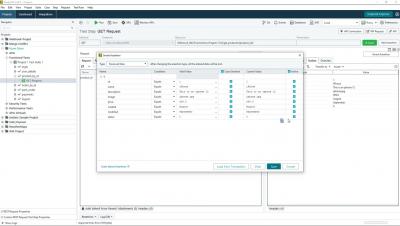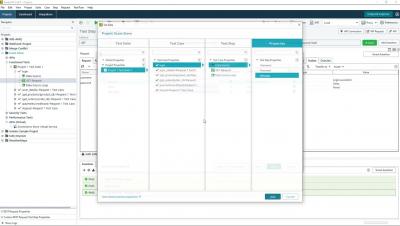Systems | Development | Analytics | API | Testing
May 2023
A Comprehensive Approach to Quality: Integrating Test Automation & Test Management
Manual tests slow down your team and limit test coverage, but implementing UI test automation can sometimes seem daunting. After all, you have a massive application with numerous moving parts, and UI tests are notoriously flaky. So, how can you improve quality and streamline your UI testing efforts? In this article, you’ll learn the difference between test automation and test management, and how integrating the two can unlock a more comprehensive approach to quality.
Smart Assertions Overview
Tell me about the Smartbear Product Portfolio
Data Driving Smart Assertions in ReadyAPI
General API Trends
API Tooling
Supported API Experiences
Test Management and Jira - Understanding the Basics
Software development is a complex process that involves a variety of activities, including design, development, testing, and deployment. Among these, testing is one of the most critical phases, as it ensures that the software product meets the desired quality standards and functions as intended.
What is Visual Testing?
Companies today deploy new releases constantly, some even daily. This constant deployment means regular updates are occurring or existing lines of code are being altered, which can cause problems. The slightest change of code can break the functionality of an existing code structure causing the user experience to suffer. Maintaining a visually perfect UI is important for retaining customers.
How to Test Smartphone Biometrics
Smartphones have advanced greatly since their introduction in the 2000s. From faster GPUs for gaming to advanced instrumentation, these devices are now more computer than phone. Given the limitations of simulators and the complexity of real devices, they've also become a challenge for app developers to test. Biometric authentication, a fast-growing smartphone technology, introduced testing challenges.
Explore What's New - Episode 3
How to Use ChatGPT in Your Automated Tests
OpenAI's ChatGPT has become the fastest-growing app of all time – and if you've tried it, that probably doesn't come as a surprise! ChatGPT has become popular for everything from creative tasks like writing a poem to technical tasks like writing code. Meanwhile, the business world is quickly discovering its ability to summarize complex data sets or perform complicated analyses. But, of course, these use cases are just scratching the surface of what may be possible long term.
Solve the Testing Challenges of Lazy Loading
A slow website is a major turn-off for potential customers. To address this, one technique is to load resources only once they are needed on a website, hence the term "lazy loading". Asynchronous, or lazy loading, is a technique where content below the viewport (like images, videos, text, and other objects) is either: This makes your website more efficient and increases your bandwidth, allowing you to deliver a faster and better user experience.
Enhance Clarity with BugSnag's Upcoming Real User Monitoring Capabilities
SmartBear is excited to announce the upcoming beta for real user monitoring, a new facet of BugSnag’s observability stack. BugSnag is a full-stack monitoring solution delivering real-time data to improve app performance and help you balance roadmap agility with application stability.
A Day in the Life of an SDET: How to Use Automation to Improve Your Workflow
Software testers, or SDETs, have several responsibilities in today's QA-driven software industry. In addition to collaborating with developers to plan and execute tests, they are often responsible for setting up and maintaining continuous integration (CI) processes, analyzing test results, and generating reports for stakeholders. In this article, you'll learn about the evolution of the SDET role and how automation and artificial intelligence (AI) can help improve efficiency.
Artificial Intelligence Poised to Drive API Growth, according to Nearly 40% of Respondents in Recent Survey
Top Five Reasons Security Matters on Atlassian Marketplace
As an application development leader, you’ll want to continuously improve your team's processes and outcomes. The cloud marketplace has become a popular way for enterprises to buy software, but with the increasing amount of sensitive data being processed, stored, and transmitted in the cloud, security has become a critical concern for both cloud service providers and their customers.
















